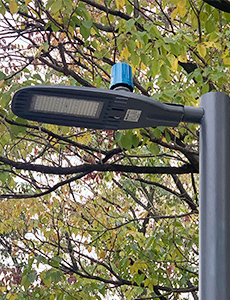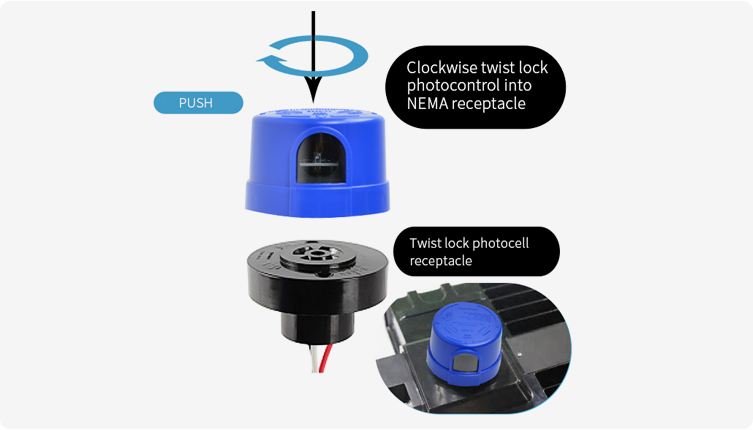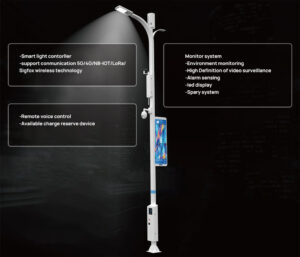Mastering the Future: The Latest Trends and Technologies in the South American Outdoor Lighting Market for 2025
Introduction
Cities are growing, and people worry more about safety. Governments and businesses are currently reconsidering their approach to illuminating areas, with a focus on sustainability goals, in mind. Lighting has evolved beyond providing light to encompass elements of intelligence and efficiency while emphasizing control well.
In 2024 alone, the Latin American lighting sector reached approximately USD 7.9 million in revenue. Projections show a 6% CAGR from 2025 to 2030. The advancement is driven by the increasing use of technologies. It uses photocell sensors, remote-controlled systems, and intelligent streetlight networks. In this article, we’ll delve into cutting edge technologies and current trends that are influencing an rapidly expanding industry.
How Are New Technologies Transforming Outdoor Lighting Across South America?
New technology is moving outdoor lighting forward. It is taking us into a fresh era. The biggest drivers? Smarter systems, greener performance, and lower costs. LEDs, photocell lighting sensors, and wireless controls are reshaping our lighting. They change how public and private spaces light up after dark.
These innovations are not just about light. They also use data, automation, and adaptability. Let’s break down the biggest changes. They are changing the industry.
What Are the Latest Advancements in LED Technology?
LED lighting is evolving fast. It has seen rapid innovation in the last few years. Recent advancements, in LED technology have led to increased brightness levels (lumen outputs) enhanced color accuracy (color rendering) and efficient heat dissipation capabilities. They outperform traditional lighting on every front. They are up to 80% more energy-efficient. They can last up to 50,000 hours or more.
Today’s LEDs also offer:
● Better performance in extreme weather.
● Smart dimming features.
● Improved optics for targeted illumination.
These characteristics are quite effective. Are ideal, for illuminating streets and parks well, as enhancing the exteriors of businesses and walkways.
How Do Smart Control Systems and Photocells Improve Outdoor Lighting?
One major leap forward is here. It is the integration of photocell control systems. These devices have sensors that read the natural light. They automatically switch the lights on or off so you don’t have to, which saves energy.
Smart systems go a step further by:
● Monitoring fixture health in real-time.
● Adapting brightness to traffic and pedestrian flow.
● Allowing remote control via mobile apps or central dashboards.
This reduces maintenance costs and ensures 24/7 reliability. Photocell sensors and wireless controls work together in many towns. This mix is becoming the new standard.
What Role Do Photocell Sensors Play in Modern Outdoor Lighting?
Photocell sensors are also known as photoelectric sensors. They are a key part. They play an important role in modern outdoor lighting systems. They detect the level of light around them and automatically control when lights turn on and off. This ensures that light is only provided when it is needed. This modern function not only saves energy, but it also helps. It makes lighting equipment last longer.
Benefits of Photocell Sensors in Outdoor Lighting
Benefit | Description |
Energy Efficiency | Reduces unnecessary energy consumption by ensuring lights operate only during low-light conditions. |
Extended Equipment Lifespan | It reduces wear and tear on lighting fixtures. It stops them from running all the time. |
Enhanced Safety and Security | It provides steady light at night. This improves sight and stops crime. |
Cost Savings | It lowers electricity bills and maintenance costs. This happens because the lights work fewer hours and last longer. |
What Key Trends Are Shaping Outdoor Lighting Demand in South America Today?
The outdoor lighting market is not just growing. It is also changing. Customers and governments are demanding better lighting systems. They want them to be clean, smart, and cost-efficient. Energy policies and environmental consciousness are now shaping buying decisions across the continent.
Let’s look at the top forces at play.
How Are Sustainability Goals and Regulations Changing the Industry?
South American countries are adopting aggressive climate policies. Outdoor lighting accounts for a significant portion of urban energy use, and energy-efficient lighting is a quick win for meeting these targets.
As a result:
● Governments are phasing out high-energy fixtures.
● LED retrofits are now common in urban projects.
● Photocell lighting sensors are encouraged for “dusk-to-dawn” automation.
Reducing light pollution is another target. Smart systems that dim when not needed or adjust to traffic flow help minimize environmental impact while keeping people safe.

What Do Today’s Customers Want from Outdoor Lighting Systems?
Today’s buyers—from city officials to building managers—are more informed. They want lighting systems that are:
● Energy-efficient.
● Long-lasting.
● Smart-enabled.
● Easy to maintain.
The result? A growing demand for street light photocell systems and smart controls that can be integrated with other technologies like traffic monitoring, security systems, and renewable power sources.

Where Are Innovative Lighting Technologies Already Making a Real Impact?
It’s not all theory—real cities and companies are already reaping the benefits of modern outdoor lighting. From large-scale LED retrofits to photocell-powered smart poles, these examples show what’s possible when innovation meets demand.
How Did a Lighting Overhaul Save a European Town 70% in Energy Costs?
Villanúa, Spain, underwent a full lighting renovation using LED fixtures with integrated smart controls and photocell sensors. The result? A 70% cut in energy usage, lower maintenance costs, and dramatically reduced light pollution.
This project earned accolades from the Lit Lighting Design Awards for its blend of function, sustainability, and aesthetics.
South American cities can—and are—following suit, especially in Brazil, Chile, and Colombia, where smart city programs are ramping up.
How Do Intelligent Systems Simplify City Management and Cut Costs?
With the rise of photocell switch technology and remote monitoring platforms, many municipalities are seeing fewer outages, faster repairs, and 25–40% reductions in maintenance labor.
Systems using NEMA 7 pin sockets allow for easy installation of photocell lighting controls. These solutions are modular, adaptable, and upgrade-ready—helping cities scale as tech evolves.
Longjoin’s IP65 photocontrols and smart photocell switches are designed for rugged performance in harsh outdoor conditions.
How Will Innovation Shape the Future of Outdoor Lighting in South America?
The answer is simple: a leading one. As demand grows and expectations rise, technology will continue to drive the outdoor lighting market forward. Cities, commercial developers, and utility providers will invest in smart, sustainable systems that do more with less.
To stay competitive, manufacturers must prioritize:
● Durability.
● Energy savings.
● Smart integration.
● Sustainability.
Longjoin is already a leader in this space, offering reliable products like the Zhaga socket, photocell light switches, and photoelectric sensors that are built for tomorrow’s challenges.
Top Features to Look for in 2025 Outdoor Lighting Systems
Feature | Benefit |
Photocell Lighting Sensor | Automates on/off function based on natural light |
Smart Remote Control Switch | Enables real-time lighting adjustments |
LED Technology | High efficiency and long operational life |
IP65 Waterproof Design | Withstands harsh outdoor conditions |
Zhaga/NEMA 7-Pin Socket | Future-proof compatibility with intelligent modules |
Conclusion
The South American outdoor lighting market is entering a new era. It is defined by intelligence, efficiency, and environmental responsibility. Using innovations like LEDs, photocell lighting sensors, and smart remote control switches helps stakeholders build a future-proof infrastructure. This approach cuts energy consumption and lowers operational costs. Trends change fast. We must keep innovating and stay flexible.
External Link
- https://www.sciencedirect.com/science/article/pii/S2773186324000720
- https://cadenaser.com/aragon/2024/12/16/el-proyecto-de-renovacion-luminica-de-villanua-galardonado-en-los-prestigiosos-lit-lighting-design-awards-2024-radio-jaca-ser-pirineos/
- https://e-greenelectrical.com.au/why-led-lights-are-energy-efficient/#:~:text=Longevity%20and%20Durability&text=LED%20bulbs%20get%20the%20upper,and%20styles%2C%20making%20them%20durable.
- https://grandviewresearch.com/horizon/outlook/lighting-market/latin-america
- https://en.wikipedia.org/wiki/Photoelectric_sensor






